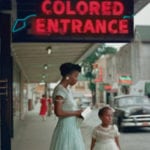 Politics
Politics  Politics
Politics  Weird Stuff
Weird Stuff Ten Bizarre Facts About The Doge Meme
 Our World
Our World 10 Ways Your Christmas Tree Is More Lit Than You Think
 Movies and TV
Movies and TV The 10 Coolest Stars to Set Sail on The Love Boat
 History
History 10 Things You Didn’t Know About the American National Anthem
 Technology
Technology Top 10 Everyday Tech Buzzwords That Hide a Darker Past
 Humans
Humans 10 Everyday Human Behaviors That Are Actually Survival Instincts
 Animals
Animals 10 Animals That Humiliated and Harmed Historical Leaders
 History
History 10 Most Influential Protests in Modern History
 Creepy
Creepy 10 More Representations of Death from Myth, Legend, and Folktale
 Politics
Politics 10 Political Scandals That Sent Crowds Into the Streets
 Weird Stuff
Weird Stuff Ten Bizarre Facts About The Doge Meme
 Our World
Our World 10 Ways Your Christmas Tree Is More Lit Than You Think
Who's Behind Listverse?

Jamie Frater
Head Editor
Jamie founded Listverse due to an insatiable desire to share fascinating, obscure, and bizarre facts. He has been a guest speaker on numerous national radio and television stations and is a five time published author.
More About Us Movies and TV
Movies and TV The 10 Coolest Stars to Set Sail on The Love Boat
 History
History 10 Things You Didn’t Know About the American National Anthem
 Technology
Technology Top 10 Everyday Tech Buzzwords That Hide a Darker Past
 Humans
Humans 10 Everyday Human Behaviors That Are Actually Survival Instincts
 Animals
Animals 10 Animals That Humiliated and Harmed Historical Leaders
 History
History 10 Most Influential Protests in Modern History
 Creepy
Creepy 10 More Representations of Death from Myth, Legend, and Folktale
10 Appallingly Real Moments In ‘Reality TV’ Programming
“All the world’s a stage,” it’s been said, and that’s generally how people like it. We adapt to our changing roles in life, forging a purpose for ourselves as an apathetic universe ushers us toward extinction. This rather fatalistic conceit gains a darker layer of meaning when viewed through the filter of reality programming, where people are often reduced to caricatures of the parts they play in daily life. While some actors on the world’s televised stage knowingly ape themselves in the name of entertainment, others are objectified as the oblivious butts of a cruel joke. And when the latter happens, reality programming becomes an unwitting meta-commentary on its own depravities.
10T.I.’s Road To Redemption Defamed A Dead Man In A Funeral Home
The year 2007 was eventful for Grammy Award–winning rapper Clifford Harris, better known by his stage name T.I. On the heels of his third successful album, he co-starred in the film American Gangster with Hollywood mega-stars Denzel Washington and Russell Crowe. He was also going to prison. In October that year, T.I. illegally acquired machine guns and silencers for ominously unspecified purposes. Facing a possible 20-year sentence, the rapper sought to ingratiate himself with Lady Justice through youth-targeted community service that doubled as material for an MTV reality series called T.I.’s Road to Redemption. The savvy gamble resulted in T.I. only getting a year behind bars. The show also resulted in MTV getting sued.
T.I.’s Road to Redemption was premised on its eponymous star dispensing wisdom about the evils of crime to youngsters (and getting a light prison sentence). The first episode, ham-fistedly titled “You Are Responsible for Your Own Actions,” featured T.I. entering a funeral home and conversing with the mortician about the body of Joseph Williams. According to the mortician, Williams was a “hustler,” and his parents had no clue how he died. Shortsightedly, no one on the show ran this account by the deceased’s parents or got permission to display Williams’s body. Williams’s parents, who recognized their son despite his face being obscured onscreen, responded with litigious fury.
The family felt that MTV had invaded their privacy, misrepresented their son, and violated his likeness on national television. Moreover, the body should never have been available for filming. Williams was supposed to have been cremated, not publicly maligned to help a rapper improve his own image. Viacom, MTV’s parent company, was forced to pay millions of dollars in compensation. The exact amount was undisclosed, but reports say Viacom sued its own insurer to cover legal costs in excess of $3 million.
9There’s Something About Miriam Misled Contestants In A Transphobic Ruse
Hit shows like The Bachelor and The Bachelorette, in which groups of people compete for a prospective spouse, tap into core drives of the human psyche. People want to find romantic fulfillment, to stand out for their winsome individuality, and to win. So it’s no wonder that people are attracted to venues that treat the chance for happily ever after like a love-themed gold rush. But in the early 2000s, a Sky TV reality show called There’s Something About Miriam warped that basic formula by playing on the cultural stereotype of transgender people as carnal con artists.
There’s Something About Miriam followed seven men as they sought to win over an attractive Mexican model named Miriam. But what the men didn’t know as they kissed and cuddled with their object of competitive affection was that Miriam was a male-to-female transsexual awaiting transitional surgery. That bombshell would be revealed to television audiences at the outset of the show but was withheld from the contestants themselves until Miriam chose a winner.
But Sky TV got more than it bargained for. Six of Miriam’s suitors were livid about her secret. One allegedly punched a producer in anger. And while this was arguably the kind of drama the show’s creators were hoping to elicit, the men’s seething anger boiled over into a lawsuit aimed at preventing There’s Something About Miriam from ever reaching the airwaves. Unwilling to part with the potential ratings from broadcasting such a controversial contest, Sky TV agreed to pay the six contestants an undisclosed amount of money.
8New York Med Filmed A Man’s Death Without His Family’s Knowledge
Confidentiality is a major part of medical ethics. But as reality television infiltrates hospital settings, medical professionals are beginning to violate the sanctity of secrecy for the sake of entertainment. The spate of camera crews filming ailing patients and worried families without their knowledge has prompted calls for greater privacy protections in countries like Sweden. But one of the most morbid examples of compromised patient privacy was an episode of America’s hit hospital series NY Med, which broadcast a man’s death without anyone’s consent.
NY Med provides a firsthand look at the triumphs and tragedies faced by a bevy of surgeons—including controversial TV personality Dr. Mehmet Oz—at two different New York hospitals. One of the tragedies revolved around Mark Chanko, a husband, father, and Korean War veteran who was struck by a truck in 2011. Chanko was treated by NY Med star Sebastian Schubl, who tried unsuccessfully to save his life. As Schubl broke the news to the Chanko family, he neglected to also inform them that a television crew had been in the emergency room as Chanko died and was even stationed outside a hospital conference room recording audio as he spoke to them. The family had no clue until the following year, when Anita Chanko, Mark Chanko’s widow, saw an episode of NY Med and recognized her husband’s voice as he lay dying, asking about his wife.
The Chankos were devastated and incensed. Neither they nor Mark Chanko had been asked for permission to film, let alone broadcast, Chanko’s death. Parent company ABC pulled the episode but continued to reference it in a glib advertisement which described Dr. Schlub as a “Dr. McDreamy–like young trauma surgeon” who tried “to save the day when a critically injured pedestrian struck by a vehicle [was] brought to the ER.” A distraught Anita Chanko sued for $5 million. However, her suit was struck down on the grounds that NY Med’s breach was “not extreme or outrageous enough” for her case to be heard.
7Teen Mom Capitalized On Domestic Abuse
Reality programs that seek to uncover the grittier sides of life often share a cold commonality with nature shows: a policy of noninterference. Just as a nature film crew might let a baby penguin starve in the wild, reality shows sometimes let people compromise themselves in shocking ways. Viewers have witnessed everything from horrid racial slurs slung in the presence of a child to an alcoholic being allowed to drive drunk in the name of authenticity. One of the most disturbing examples of this almost laissez faire approach to entertainment comes courtesy of the series Teen Mom, which permitted a pattern of domestic abuse to unfold uninhibited.
MTV’s Teen Mom is a continuation of the series 16 and Pregnant, which showed how tough life is for pregnant teens. Teen Mom focused on their struggles with parenthood, school, and work. One of the show’s stars was Amber Portwood, who was featured on various occasions interacting with boyfriend Gary Shirley and their one-year-old daughter. In 2010, those onscreen interactions took a turn for the felonious as the then 20-year-old mom was shown slapping, punching, and choking Shirley on at least three different occasions, two of which occurred right in front of the couple’s child.
The show’s staff had known about and filmed the abuse a year before the episode aired, but reality show producers aren’t legally obligated to report crimes or prevent future ones. Despite this technicality, it’s nonetheless disheartening that an entire staff of people looked on as a woman repeatedly attacked her mate in the presence of an impressionable toddler and opted to do nothing but use those moments to titillate future audiences. It wasn’t until the episode aired that law enforcement got involved and arrested Portwood.
In the following years, MTV and the media were present to watch as Portwood’s life crumbled into a tortured mess of attempted suicide, drug use, and incarceration.
6Call Of The Wildman Manufactured Scenes Using Drugged And Illegally Transported Animals
From Moby Dick to Planet of the Apes, humans have a long history of fashioning other members of the animal kingdom as daunting adversaries. In its own quaintly rugged way, Animal Planet adds to that tradition through a reality series called Call of the Wildman. Set largely in the backwoods of Kentucky, Call of the Wildman follows the constantly yipping, chronically shirtless Ernie “Turtleman” Brown Jr. as he captures an assortment of nuisance animals from residential and business settings. But while Brown is billed as an animal lover who only neutralizes critters for their “own good,” a months-long investigation by the site Mother Jones suggests otherwise.
Among the litany of sins attributed to Call of the Wildman, Mother Jones found several instances in which animal removal scenes were manufactured to the detriment of animals involved. For one episode, the show’s producers acquired baby raccoons to film a scene where they were removed from a house. During that time, they became extremely frail, and one of them died after filming. A different outing involved an illegally sedated zebra brought in so that Turtleman could tackle it to the ground on film. While the show’s management denied knowledge of the drugging, sources from the show acknowledged being fully aware that the animal was “woozy” and “barely usable.”
In addition to indications of gross mistreatment, Mother Jones also found evidence that Call of the Wildman illegally relocated wildlife for filming purposes. In one instance, coyotes were imported from Ohio in violation of Kentucky law. In another, bats were planted in a Texas salon for filming, which is prohibited, according to a member of the Texas Parks and Wildlife Department. In both cases, evidence was uncovered that animals were ill or died during production. Such scandals led Animal Planet Canada to officially disown Call of the Wildman in 2014, though the show still thrives in the US.
5Under Wild Skies Broadcast Its Star Shooting An Elephant In The Face
On September, 22, 2013, NBC’s news wing celebrated National Elephant Appreciation Day with an online list detailing how strikingly human and generally remarkable elephants are. That same day, whether by cruel coincidence or a misguided attempt at thematic unity, NBC Sports horrified viewers when it aired scenes of a hunter enthusiastically killing a frightened elephant before celebrating over a bottle of champagne. That footage came from a show called Under Wild Skies, and the shooter was big game hunter and NRA strategist Tony Makris.
The premise of Under Wild Skies was inherently controversial: Makris traveled to beautiful regions throughout the world and shot large animals to death for sport. This alone would be enough to ruffle the feathers of any animal lover, but the hunter infuriated viewers at large when he journeyed to Botswana with a .577-caliber rifle that, according to Makris, was “made to shoot ivory.” The ivory in question belonged to an African elephant, an animal so widely poached for its tusks that a recent study by the National Academy of Sciences cautioned that they could be wiped out entirely within the next century if current rates persist.
In Makris’s case, the hunting was legal because Botswana had yet to enact its eventual ban on hunting the country’s dwindling elephant population. But that was likely little consolation for the viewers who witnessed him fire at, chase, and then shoot an elephant in the face from about 6 meters (20 ft) away. An online petition to cancel Under Wild Skies generated over 100,000 signatures.
In an abysmally worded response, Makris dismissed people’s aversion to hunting elephants (in contrast with other animals) as “animal racism” before practically branding his detractors zoological Hitlers. Bewilderingly, while NBC had been willing to forgive Markis gleeful killing a member of an at-risk animal species, the company deemed his Hitler comment inexcusable and officially dropped Under Wild Skies from the network.
4Bumfights Paid Homeless People To Abuse Themselves And Each Other
If you’ve ever wondered what the nexus of abject deprivation, spectatorial bloodlust, and low-budget filmmaking would be like, look no further than Bumfights. The macabre brainchild of California film school graduates Ty Beeson and Ray Laticia, the video series was premised on precisely what it sounds like: homeless people clobbering each other. For payments of food, clothing, or cash amounts ranging from $20 to $100, men and women living on the streets would wale away at each other. Additionally, a man called Rufus the Stunt Bum was paid to ride a shopping cart down stairs and run into a wall. Others were prompted to pull out teeth with pliers, slam their arms with steel doors, and allegedly not to cooperate with police.
The gruesome series drew instant criticism. The creators insisted that the participants were mentally sound and provided full consent, but advertisements for Bumfights described them as intoxicated. And while Laticia and Beeson patted themselves on the back for giving homeless people an outlet for their aggression and a brief escape from harsh life, they ignored the inherent mistreatment in paying desperate people to harm themselves. Advocates for the homeless derided the series’s base callousness.
In 2006, after a four-year run marked by controversy and arrests of the series creators for obstructing justice, the bareknuckle brutality of Bumfights was quashed. Three homeless men who were filmed sued the makers and distributors of the series for mental and physical injuries. The word “Bumfights” had been tattooed across their foreheads and other body parts. The men had been paid to burn their hair and run into solid objects. San Diego’s Superior Court ordered the filmmakers to financially compensate the heavily exploited men and discontinue the videos’ sale and production. It was the last ugly controversy anyone would associate with Bumfights, until two of its producers were arrested in 2014 for trying to smuggle a dead baby’s remains out of Thailand.
3Homeless Real World Spoofed Reality Television By Debasing The Homeless

In 1992, MTV transmogrified the landscape of entertainment when it broadcast the first ever season of The Real World, a “reality-based soap opera” in which seven motley strangers invited viewers to laugh and loathe with them as they lived together in half-baked sincerity. Sixteen years later, a small company called ManiaTV (which you likely noticed can also be abbreviated as “MTV”) sought to pay cynical homage to the iconic series with Homeless Real World, which offered the dehumanizing bluntness of Bumfights without its sadistic slugfests and body-battering stunts.
The show starred six beleaguered men who suffered from alcohol and other substance abuse problems and had no place to call home. Each received money for permission to film them in humiliating social situations. The staff paid for the men to go golfing to capture the moment when they were kicked off the course. The men received money to shop in an opulent neighborhood, where they were treated like hideous human zoo animals by intolerant passersby. They were displayed in various states of intoxication, even after a cast member urinated on himself. And in a blatant mockery of their homelessness, the staff organized a competition to see which cast member could construct the best cardboard house.
But despite its deeply mean-spirited beginnings, Homeless Real World had an unexpected silver lining. The producers and filmmakers of the show became emotionally invested in fates of their cast and sought to turn their lives around. With their help, four out of the six men who appeared on the show found a place to stay, and the remaining two entered rehabilitation centers. It’s unfortunate that it took callously debasing some of the most disenfranchised people in society for the show’s creators to rediscover the better angels of their nature. But to their credit, once they reconnected with their own humanity, those merchants of unbridled exploitation became vessels for positive change.
2The First 48 Paints Deceptive Portraits Of Criminal Investigations And Jeopardizes Justice
Because of reality TV’s inherent sensationalism, introducing it to certain areas of life can prove disastrous. Criminal justice is one of those areas, and the A&E channel’s addictively popular The First 48 is a shining example of why. Built on the premise that the optimal window for solving a crime is 48 hours after it occurs, the show aims to give a nuts-and-bolts breakdown of time-sensitive detective work. In the process, officers have misrepresented cases and arguably ruined lives for the sake of ratings.
One of the show’s victims was a young man named Taiwan Smart. The First 48 segment on Smart’s case would have viewers believe that witnesses, ballistic evidence, and even Smart’s own alleged dishonesty convincingly implicated him in a double homicide. But in truth, the detective interviewed for the show lied about all of the above to tell a misleading story.
Although Smart was ultimately cleared of all charges, A&E—which issues the disclaimer that suspects shown on The First 48 are presumed innocent—continued showing reruns of the misleading episode unedited. It became nearly impossible for Smart to find work. Examination of several other episodes reveals dubious and ultimately retracted eyewitness testimony, sloppy detective work, and an apparent rush to arrest people. And as with Taiwan Smart, The First 48 refuses to update incriminating episodes even after the suspects are cleared of wrongdoing.
Further highlighting the show’s deleterious impact, one detective has even gone on record in court to say that he “play-acted” parts of investigations for the camera but couldn’t distinguish which parts. This desire for showmanship was also believed to motivate officers to use a flash grenade during a botched raid in which police stormed the wrong apartment and fatally shot a seven-year-old girl. More recently, the show’s tendency to heavily stylize and decontextualize footage of arrests and interrogations has also compromised a murder case, providing further evidence that rather than documenting justice, The First 48 sometimes instigates injustice.
1A Woman In Fear Of Being Humiliated By A Reality Show Committed Suicide

Fame is a fickle-hearted mistress that regularly delights in ravaging her paramours. Everyone from renowned musicians driven to drug addiction to accidental Internet stars mentally decimated by overexposure and harassment can attest to the perils of prominence. Reality programs tell a similar tale, with a shocking record of suicides by show participants. But notoriety and its discontents must be especially harrowing for someone who begs in vain to be spared from them. That was soul-wrenchingly true for Elizabeth Outram, who ended her life in overwhelming fear of being publicly shamed by a reality show.
Outram’s tragic end began with a department store indiscretion. While shopping around at a TK Maxx for something to wear at a rock ‘n’ roll–themed party, she set her sights on a leather jacket out of her price range. Determined to have it anyway, she replaced the jacket’s price tag with a more affordable one, unaware that her crime had been recorded by the makers of a “caught on camera” reality show being produced by Renegade Pictures. Otram was charged with fraud, but for her, the far greater indignity was the prospect of having her lapse in judgment shared with the world. Having grappled with depression, anxiety, and panic attacks for roughly seven years, she had finally managed to rein in her demons. But now facing trial by humiliation, she again became unglued.
Outram begged Renegade Pictures not to use its footage, explaining that she had a long history of mental illness and couldn’t bear the stress. The company refused. According to Outram’s sister, they even needled her with phone calls and texts about their plans. Feeling mortified and psychologically defeated, Outram hanged herself after celebrating her 30th birthday with friends and family.
Renegade Pictures, of course, can’t be held directly responsible, but the company’s unflinching insensitivity to a desperate woman’s pleas speaks volumes about the valuation of ratings over the welfare of a person in dire emotional straits.








